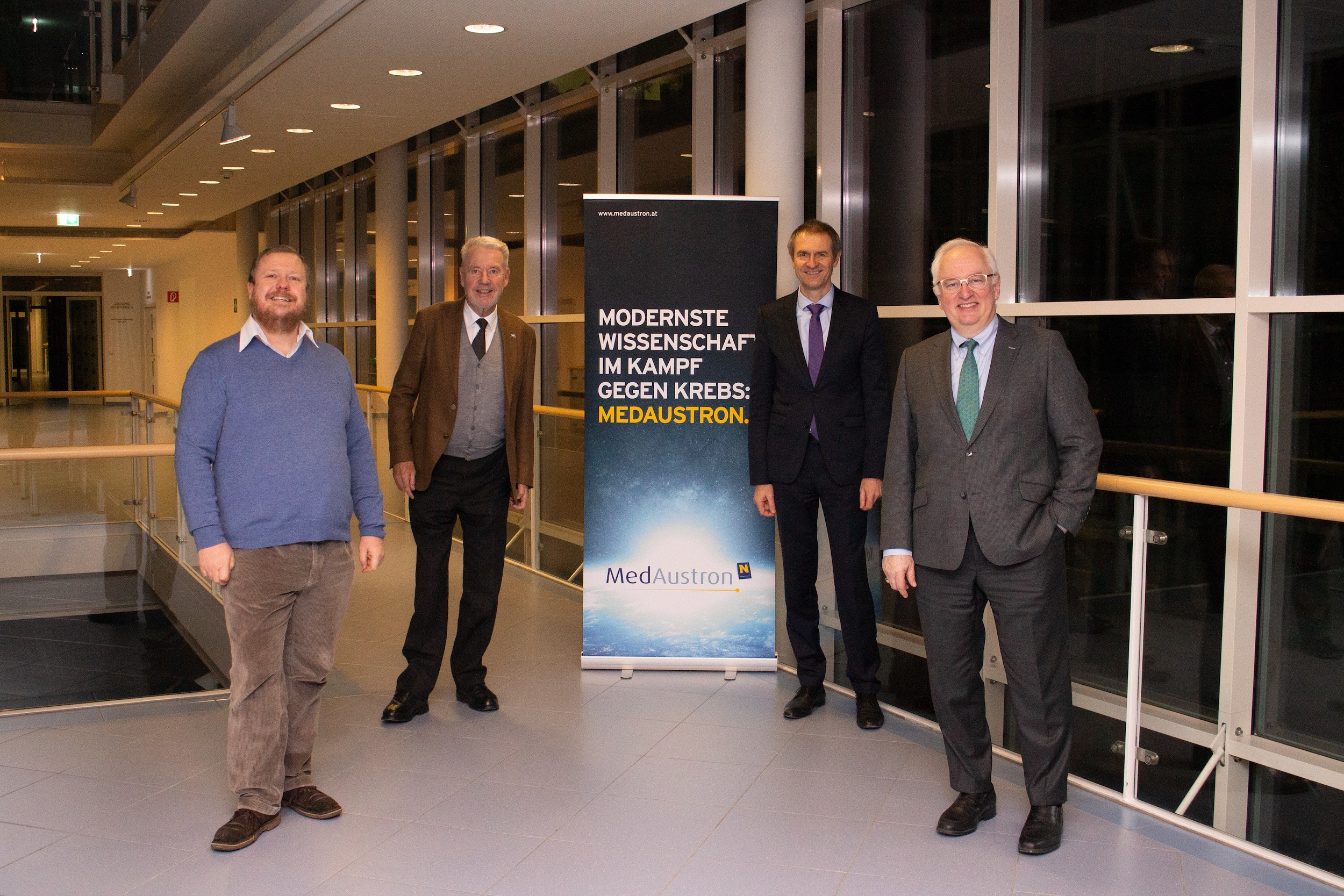Cancer therapy with carbon ions: Already 100 patients treated

In only six countries worldwide, irradiation with carbon ions is available to cancer patient*. MedAustron has been offering this form of therapy since July 2019 and today started the 100th patient treatment. Experience gained so far was recently presented to a broad professional audience for the first time in an online seminar.
In radiation therapy with charged particles, carbon ions are used in addition to the more widespread protons. Both particles have the advantage that the radiation exposure in healthy tissue can be kept low, thus reducing the risk of side effects and late effects. Carbon ions, however, additionally have a higher biological effectiveness, unleashing even more destructive power in tumor cells.
“Even small doses of this radiation can break chemical bonds, change the shape of molecules and destroy DNA. Because cancer cells have inadequate repair mechanisms prepared for this damage caused by carbon ions, it can also be used to combat particularly difficult-to-treat tumors that do not respond to other types of radiation, for example,” says Dr. Piero Fossati, scientific director of the carbon ion program, describing the advantages of these particles.
Worldwide, carbon ions are currently used in only about 13 percent of all patients treated with particle beams – a logical consequence of the low availability of the technology. This makes it all the more important for MedAustron to expand its carbon ion program through new clinical studies and new treatment concepts. This has recently been made possible even better by a further technical expansion stage: irradiation can be carried out not only from a horizontal but also from a vertical direction.
Medical Director Prof. Dr. Eugen B. Hug describes the goals of the MedAustron team:
“Up to now, we have mainly treated patients with relatively rare tumors of the skull base and with sarcomas, a rare form of tumors made of bone, muscle or connective tissue. The more common tumors that are indications for carbon ion therapy include tumors from the ENT area but also re-irradiation for recurrences, i.e. tumors that have recurred after conventional radiotherapy in the same area and for which conventional radiotherapy is no longer an option. We have put together an innovative program for the next few years and will expand the indications to include e.g. tumors of the upper gastrointestinal area, carcinomas of the pancreas and primary hepatocellular carcinoma. Increasingly, however, we will also irradiate tumors in the pelvic region with carbon ions.”
The first hundred irradiations with carbon ions also provided an opportunity to present treatment results from this first phase to the professional community and to demonstrate the possibilities of this form of therapy. There was great interest in this, and the online seminar was attended by 80 participants and was very well received. Knowledge transfer and exchange with other oncology partners is of great importance to MedAustron. More than ever, cancer therapy has an interdisciplinary character and it is often necessary to coordinate several treatment methods in order to achieve the best results for the patients.
Klaus Schneeberger, Chairman of the MedAustron Supervisory Board, is very positive about the latest developments in the carbon ion program: “As one of very few providers of this therapy, MedAustron is already making a significant contribution to national and international cancer research. I am convinced that we can expect innovative treatment approaches for the benefit of patients in the future. Overall, MedAustron is doing very well and is also getting closer and closer to full operation on the technical development path with the completion of the third treatment room. As mayor, I am very proud to have MedAustron in Wiener Neustadt and that the city has thus become one of THE medical hotspots throughout Europe.”
